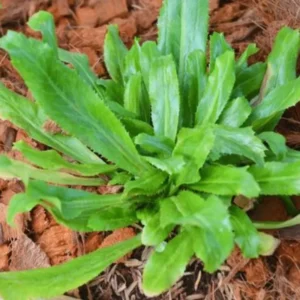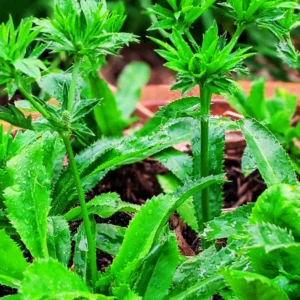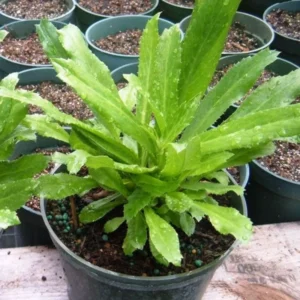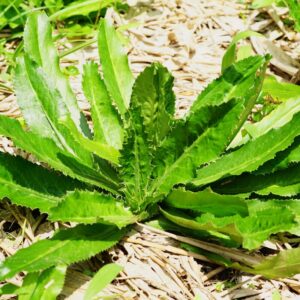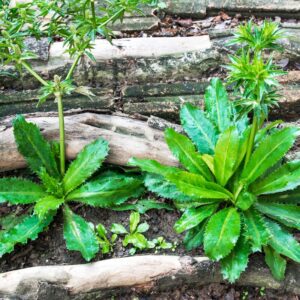Have you ever wondered how to grow culantro in containers? If cilantro’s delicate nature has frustrated you, you’re in luck!
Culantro (commonly called Mexican coriander or Eryngium foetidum) is its tougher cousin—heat-tolerant, low-maintenance, and perfectly suited for urban gardening. Whether you’re cultivating outdoors or growing culantro indoors, this hardy herb is ready to thrive. In this guide, we’ll cover every detail you need to cultivate a healthy, fragrant culantro plant, from container selection to winter care. Let’s get planting!
Why Grow Culantro in Containers?
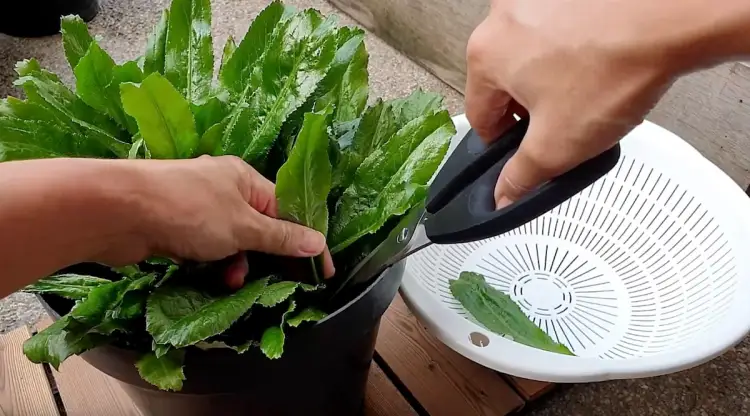
Culantro’s compact size and shade tolerance make it ideal for container gardening. It thrives in controlled environments, so whether you’re working with a patio garden or growing culantro indoors on a windowsill, you can enjoy fresh leaves year-round.
Preparing to Grow Culantro in Containers
Best Culantro Varieties for Containers
While culantro doesn’t have as many varieties as cilantro, here are two popular types suitable for containers:
-
Broadleaf Culantro (Eryngium foetidum): The most common variety, known for its robust flavor and wide leaves.
-
Sawtooth Culantro: Features narrow, serrated leaves and a slightly milder taste.
When Is the Best Time to Plant Culantro?
Plant culantro in late spring or early summer when temperatures are consistently above 50°F. Since culantro thrives in warm, humid climates, you can start seeds indoors a few weeks before the last frost date if you’re in a cooler region.
Selecting the Perfect Container
Choosing the right container is crucial for healthy growth. Here’s what you need to know:
-
Size: To accommodate the culantro’s root system, pick a pot at least 8-10 inches deep and 12-14 inches wide.
-
Material: Terracotta pots are breathable and reduce waterlogging, while plastic pots retain moisture better.
-
Drainage: Ensure your container has drainage holes to prevent root rot.
Preparing the Soil
Culantro thrives in well-draining soil that’s rich in organic matter. Use a mix of:
-
2 parts potting soil
-
1 part compost or aged manure
-
1 part perlite or sand for drainage
Maintain a soil pH between 6.0 and 7.0 for the best results. For growing culantro indoors, consider a lightweight potting mix that retains moisture but ensures proper aeration.
Choosing the Right Location
Culantro prefers partial shade or filtered sunlight. If you’re growing culantro indoors, place the container near a south- or east-facing window for 4–6 hours of indirect light daily. Alternatively, use a grow light to mimic these conditions and ensure robust growth.
How to Plant Culantro in Containers
Planting Seeds or Seedlings
Sow Seeds:
-
-
Scatter seeds on the soil surface and lightly cover them with a thin layer of soil.
-
Mist the soil gently to keep it moist.
-
Expect germination within 14-21 days.
-
For a detailed guide on starting culantro from scratch, explore our article on growing culantro from seeds.
Transplanting Seedlings:
-
-
Space seedlings 6-8 inches apart to allow proper airflow.
-
Gently press the soil around the base of the plant to secure it.
-
Watering Guidelines
Keep the soil consistently moist but not waterlogged. Check the top inch of soil; if it feels dry, it’s time to water. During hot weather, you may need to water daily.
If you’re curious about the general steps to cultivate culantro, check out our comprehensive guide to growing culantro plants for more insights.
Caring for Culantro in Pots

1. Pruning and Harvesting
-
Regularly pinch off outer leaves to encourage new growth.
-
Avoid letting the plant bolt (flower), as this reduces leaf quality. If flower stalks appear, cut them off immediately.
2. Feeding Your Plant
-
Use a balanced liquid fertilizer (10-10-10) every 4-6 weeks during the growing season.
-
Alternatively, add a slow-release granular fertilizer to the soil when planting.
3. Pest Control
Culantro is relatively pest-resistant, but aphids or spider mites may occasionally appear. Use:
-
Neem oil spray or insecticidal soap as a natural remedy.
-
Keep the area clean to discourage pests.
Common Problems with Culantro in Containers
1. Yellowing Leaves
-
Likely caused by overwatering or poor drainage.
-
Solution: Check drainage holes and adjust watering frequency.
2. Bolting
-
Happens when temperatures rise above 85°F.
-
Solution: Provide afternoon shade and trim flower stalks promptly.
3. Stunted Growth
-
May result from insufficient nutrients.
-
Solution: Fertilize regularly and check soil quality.
Winter Care for Potted Culantro
If you’re in a region with frost, bring your container indoors before temperatures drop below 50°F. Place it near a sunny window and reduce watering to prevent overhydration during winter dormancy.
Conclusion
Growing culantro in containers is a rewarding experience, whether you’re a gardening novice or an urban homesteader. By following these tips, you can enjoy fresh, fragrant leaves to elevate your culinary creations year-round. So grab a pot, some seeds, and start your journey to cultivating this versatile herb today!
FAQs
1. Can culantro be grown indoors?
Yes, as long as it receives adequate light (4-6 hours of sunlight or a grow light) and proper care.
2. How long does it take for culantro to mature?
Culantro typically matures in 60-75 days, but you can start harvesting leaves earlier for fresh use.
3. What’s the difference between culantro and cilantro?
Culantro has a stronger, more robust flavor and thrives in warmer climates, while cilantro is more delicate and prefers cooler weather.
4. How do I store harvested culantro leaves?
Store fresh leaves in an airtight container or resealable bag in the refrigerator for up to one week.
Happy planting! With a bit of care and attention, your potted culantro can become a thriving addition to your home garden.
RELATED PRODUCTS FOR YOU!

